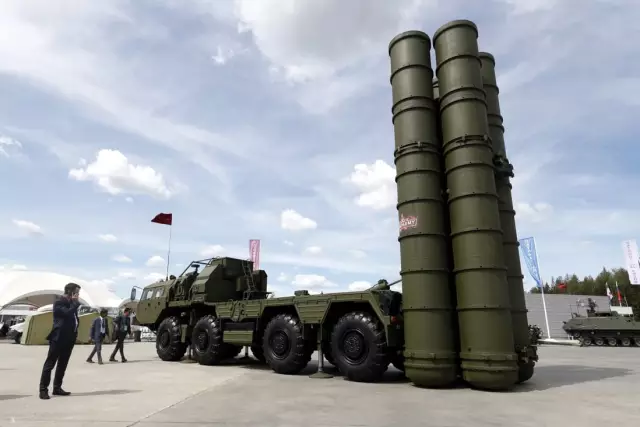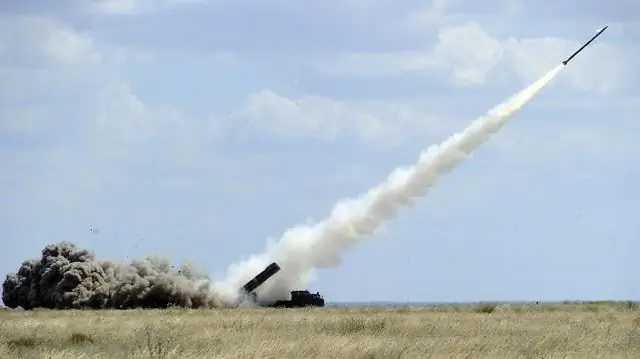2026 Author: Howard Calhoun | [email protected]. Last modified: 2025-01-24 13:10:47
Ships of the Russian Navy make long trips, but their main task is to protect their native shores. For decades, the Soviet and then Russian navies lacked offensive capability. The consequence of this situation was the relatively small efforts made by Western countries to create anti-ship systems.

The Russian Defense Ministry, on the contrary, was concerned about the problem of effective counteraction to a possible attack from the sea. The response to the hypertrophied development of the navies of countries traditionally considered potential adversaries turned out to be asymmetric. Instead of achieving a parity in the number of expensive ships, Russian machine-building NGOs have developed a number of systems that make it possible to deal with surface targets, among which the Yakhont cruise missile has become most famous.
It cannot be argued that American or European designers have been sitting idly by all previous decades. They created many samples of anti-ship missiles, the best of which is considered the Harpoon. It can approach the target at low altitude and at quite a decent speed - 865 km / h, it is difficult to detect by radar.

The Yakhont missile has slightly better performance. It is capable of flying at a height of five meters (if, of course, the excitement allows), and its speed exceeds 3000 km / h. On the way to the target, the rocket makes a "hill" and falls on it, accelerating to 750 m / s. The weight of the combat charging compartment is not less than 300 kg. Thus, with the minimum time spent on detection, it is already impossible to have time to do anything. For comparison: after firing an artillery shell flies at a speed of up to 350 m/s, and so far no one has been able to deflect it from the target.
Yakhont anti-ship missiles can be launched from various carriers, such as aircraft, diesel submarines, missile boats, and mobile ground installations. According to military experts, Western designers will not be able to create analogues in the next decade, not to mention the mass production of such systems. Moreover, none of the existing missile defense systems is able to withstand the Russian monster.
One Yakhont missile can sink a medium tonnage ship (frigate or corvette) to the bottom and seriously damage a large vessel, moreover, it will do it if necessary with a 100% guarantee.

However, not only high speed distinguishes the new Russian weapons from Western models. The designers paid special attention to the ste alth of a low-flying target. The thermal footprint is extremely reduced, which makes it difficult for the satellite to detect the launch site and calculate the trajectory, and reliableultra-fast computing unit provides a high degree of stabilization of ultra-low flight altitude.
The Yakhont missile was designed for the Russian armed forces, but it turned out to have a high export potential. With certain design changes, small batches of weapons were delivered to Vietnam, Indonesia and Iran.
The success of the recent peaceful settlement of the situation in the Middle East, in addition to the high authority of President Putin, there is another possible explanation. Probably, the secret services of the NATO countries became aware that there are Yakhont missiles in Syria.
Recommended:
Northern Sea Route. Ports of the Northern Sea Route. Development, significance and development of the Northern Sea Route

In recent years, the Arctic is one of the key regions in terms of Russia's national interests. One of the most important aspects of Russia's presence here is the development of the Northern Sea Route
Aircraft missile R-27 (air-to-air medium-range guided missile): description, carriers, performance characteristics

Aircraft missile R-27: performance characteristics, modifications, purpose, carriers, photo. R-27 air-to-air guided missile: description, history of creation, features, material of manufacture, flight range
Anti-aircraft missile system. Anti-aircraft missile system "Igla". Anti-aircraft missile system "Osa"

The need to create specialized anti-aircraft missile systems was ripe during the Second World War, but scientists and gunsmiths from different countries began to approach the issue in detail only in the 50s. The fact is that until then there simply were no means of controlling interceptor missiles
"Moskva", missile cruiser. Guards missile cruiser "Moskva" - the flagship of the Black Sea Fleet

When was Moskva commissioned? The missile cruiser was launched already in 1982, but its official use begins only in 1983
"Alder" - missile system: characteristics, tests. Ukrainian 300-millimeter corrected combat missile "Alder"

It's no secret that active hostilities are taking place on the territory of Ukraine. Perhaps that is why the government decided to create a new weapon. Alder is a missile system, the development of which was started this year. The government of Ukraine assures that the rocket has a unique technology. You can find more detailed information about the testing of the complex and its characteristics in our article

